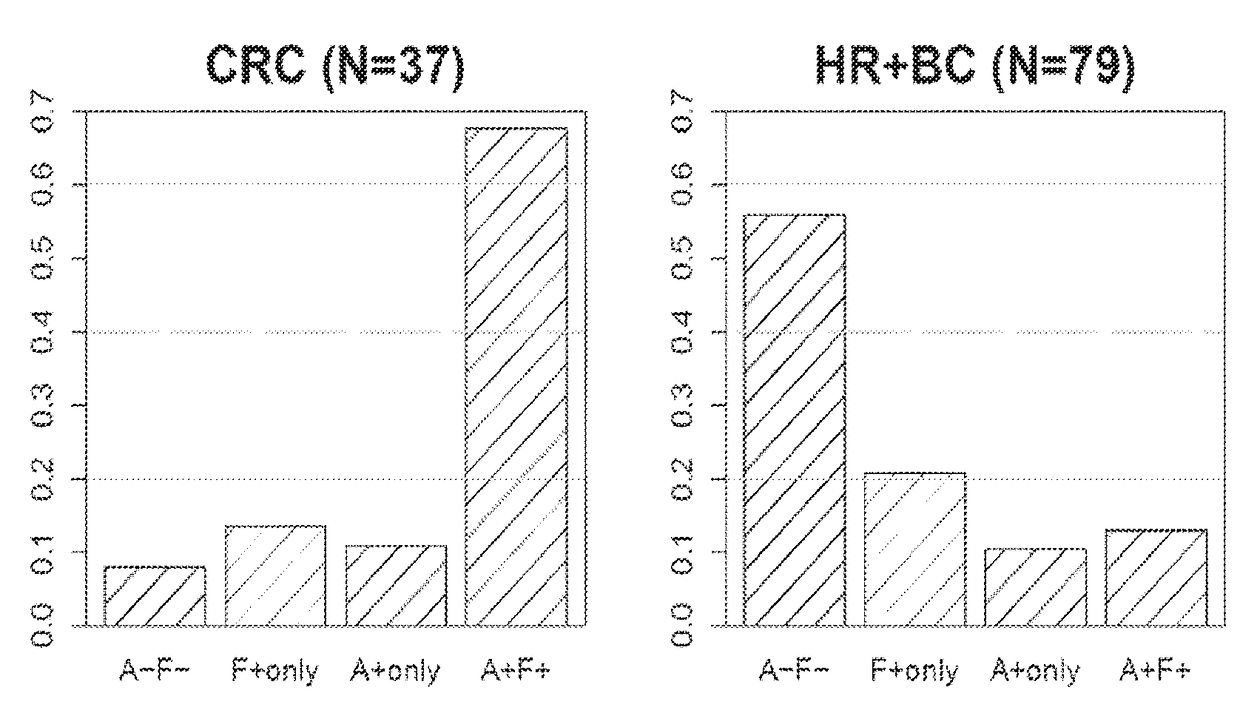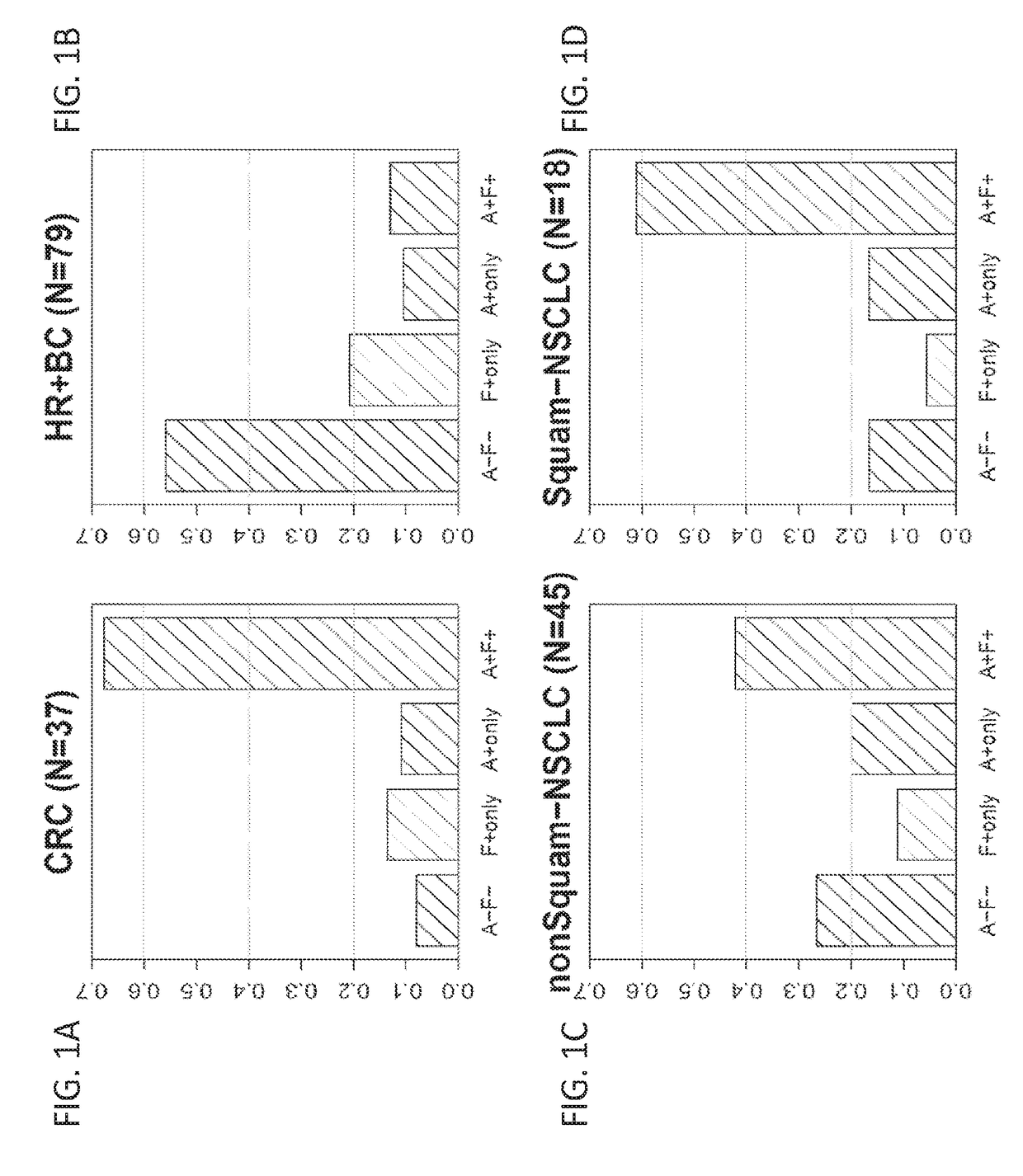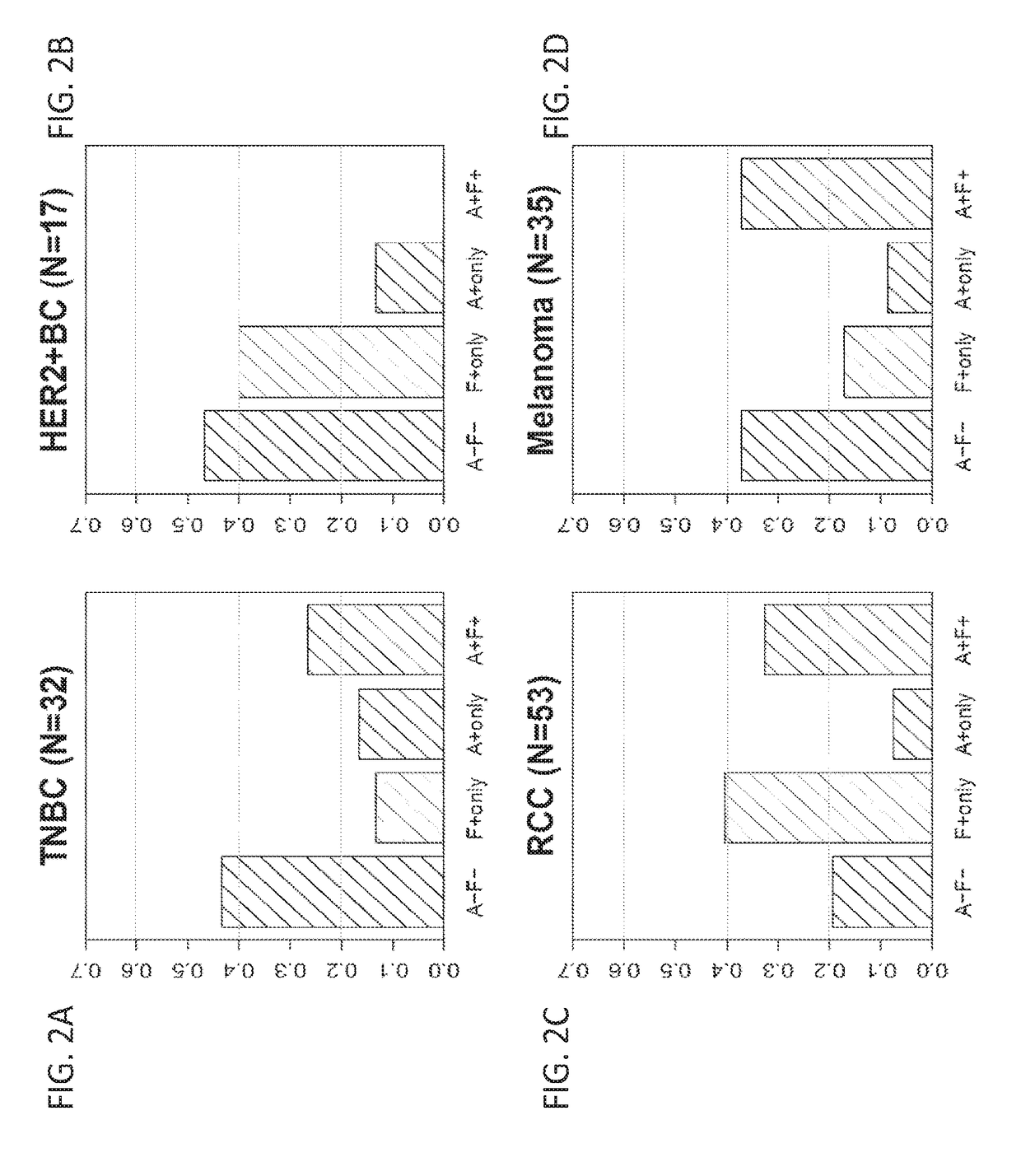Methods of treating cancer using pd-1 axis binding antagonists and il-17 binding antagonists
- Summary
- Abstract
- Description
- Claims
- Application Information
AI Technical Summary
Benefits of technology
Problems solved by technology
Method used
Image
Examples
example 1
fficacy of Combination Treatments Using Anti-PDL1 and Anti-IL-17 in an EMT6 Breast Carcinoma Model
[0401]Many factors may contribute to the overall effectiveness of cancer treatments, particularly those targeting anti-tumor immunity. It has been observed in particular patient cohorts that the expression of IL-17F correlates with non-responsiveness or a late response to anti-PDL1 treatment. Therefore, the efficacy of combination treatments including anti-PDL1 and anti-IL-17 was tested in an EMT6 syngeneic tumor model.
[0402]90 BALB / c mice were inoculated subcutaneously in the left 4th mammary fat pad with 0.1 million EMT6 cells in 100 microliters of HBSS+matrigel (BD Biosciences). Mice were allowed to grow tumors. When tumors achieved a mean tumor volume of approximately 150 mm3 (Day 0, approximately 10 days after inoculation), animals were recruited into treatment groups outlined below (extra animals were euthanized).
[0403]Treatment was initiated on Day 1. The first dose was given int...
example 2
of IL-17 Expression and Disease Progression During Anti-PDL1 Treatment
[0407]The previous Example demonstrates that combination treatments including both a PD-1 axis binding antagonist and an IL-17 binding antagonist show superior efficacy in treating cancer as compared to each treatment alone. Therefore, it is of interest to determine whether IL-17 expression may serve as a biomarker for selecting patients for a treatment with a PD-1 axis binding antagonist and an IL-17 binding antagonist. This Example analyzes the correlation between expression of IL-17 family cytokines and response to anti-PDL1 treatment for multiple cancer types.
[0408]Materials and Methods
Gene Expression Analyses
[0409]Hematoxylin-eosin (H&E) sections were prepared for all samples and were reviewed by a pathologist to confirm diagnosis and assess tumor content. RNA extraction and gene expression analysis was performed as described in Schleifman and colleagues (Schleifman E B, et al., (2014) PloS one 9(2):e88401). ...
example 3
ion of IL-17 Expression in Tumor Tissues
[0434]The previous Example demonstrates that IL-17 expression correlates with a lack of clinical response to anti-PDL1 treatment. In order to understand how IL-17 is expressed in different tumor tissues, IL-17 protein expression was visualized by immunohistochemical staining.
[0435]Immunohistochemical staining of various tissues for IL-17 protein was performed as described above. The detection reagent used was the anti-human IL-17A antibody AF-317. This reagent has been widely used to detect IL-17 in human tissues. For example, this antibody has been used to visualize IL-17A-expressing cells in cutaneous T-cell lymphoma (Fontao, L., et al. Br. J. Dermatol. 166:687-9 (2012)). Fontao et al. demonstrated that IL-17 staining correlated with CD3 staining in T cells, but in addition, other IL-17-positive cells that showed no CD3 expression were also identified. These cells were found to be morphologically similar to neutrophils and to stain for myelo...
PUM
| Property | Measurement | Unit |
|---|---|---|
| Solubility (mass) | aaaaa | aaaaa |
Abstract
Description
Claims
Application Information
 Login to View More
Login to View More - Generate Ideas
- Intellectual Property
- Life Sciences
- Materials
- Tech Scout
- Unparalleled Data Quality
- Higher Quality Content
- 60% Fewer Hallucinations
Browse by: Latest US Patents, China's latest patents, Technical Efficacy Thesaurus, Application Domain, Technology Topic, Popular Technical Reports.
© 2025 PatSnap. All rights reserved.Legal|Privacy policy|Modern Slavery Act Transparency Statement|Sitemap|About US| Contact US: help@patsnap.com



